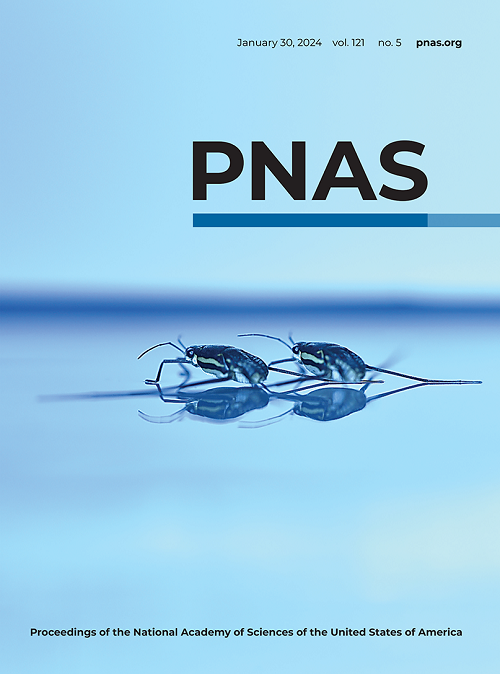In situ cavitation bubble manometry reveals a lack of light-activated guard cell turgor modulation in bryophytes
IF 9.4
1区 综合性期刊
Q1 MULTIDISCIPLINARY SCIENCES
Proceedings of the National Academy of Sciences of the United States of America
Pub Date : 2025-03-26
DOI:10.1073/pnas.2419887122
引用次数: 0
Abstract
Diversification of plant hydraulic architecture and stomatal function coincides with radical changes in the Earth’s atmosphere over the past 400 my. Due to shared stomatal anatomy with the earliest land plants, bryophyte stomatal behavior may provide insights into the evolution of stomatal function, but significant uncertainty remains due to technical limitations of measuring guard cell turgor pressure in situ. Here, we introduce a method for monitoring cell turgor pressure by nucleating microbubbles within the guard cells of intact plant tissue and then examining microbubble growth and dissolution dynamics. First, we show that maximum microbubble radius decreases with increasing pressure as the pressure of the surrounding fluid constrains its growth according to a modified version of the Epstein–Plesset equation. We then apply this method to monitor turgor pressure in dark- vs. light-acclimated guard cells across bryophyte taxa with stomata, where their role in gas-exchange remains ambiguous, and in vascular plants with well-documented light-dependent turgor modulation. Our findings show no light-activated change in turgor in bryophyte guard cells, with pressures not significantly different than neighboring epidermal cells. In contrast, vascular plants show distinct pressure modulation in response to light that drives reversible changes in stomatal aperture. Complete guard cell turgor loss had no effect on bryophyte stomatal aperture but resulted in partial or complete closure in vascular plants. These results suggest that despite conserved stomatal morphology, the sampled bryophytes lack dynamic control over guard cell turgor that is critical for sustaining photosynthesis and inhibiting desiccation.求助全文
约1分钟内获得全文
求助全文
来源期刊
CiteScore
19.00
自引率
0.90%
发文量
3575
审稿时长
2.5 months
期刊介绍:
The Proceedings of the National Academy of Sciences (PNAS), a peer-reviewed journal of the National Academy of Sciences (NAS), serves as an authoritative source for high-impact, original research across the biological, physical, and social sciences. With a global scope, the journal welcomes submissions from researchers worldwide, making it an inclusive platform for advancing scientific knowledge.

 求助内容:
求助内容: 应助结果提醒方式:
应助结果提醒方式:


